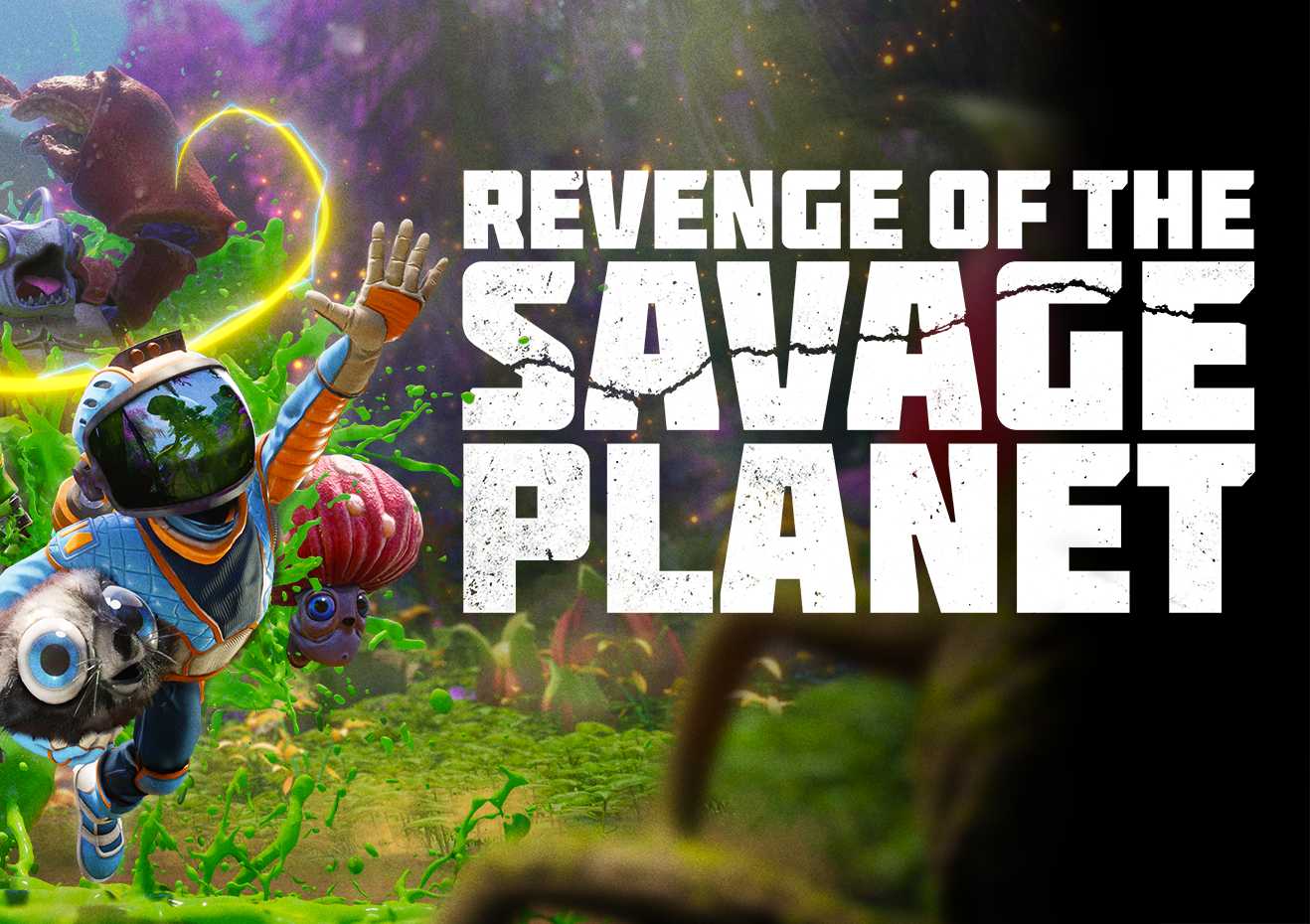Revenge of the Savage Planet is an ambitious sequel to the quirky 2020 indie hit Journey to the Savage Planet. Developed by Raccoon Logic, a studio that emerged from the ashes of Typhoon Studios after after the Google Stadia debacle, this action-adventure platformer aims to expand on its predecessor’s formula with a third-person perspective, four distinctive planets, and more emphasis on co-op play. It provides moments of vibrant charm, absurd humor, and satisfying exploration that keeps players entertained throughout the adventure.
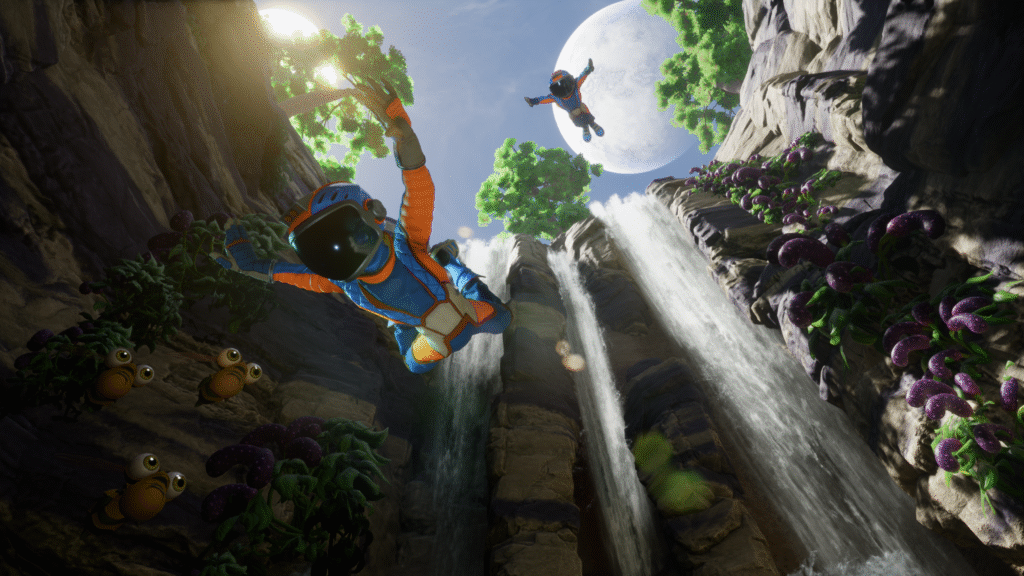
The game starts with a beautifully absurd premise: you’re an anonymous space tourist who awakens from 100 years of cryosleep to receive two emails from your employer, Alta Interglobal (which acquired Kindred Aerospace from the previous game). The first welcomes you to your mission; the second promptly terminates your employment due to budget cuts. Stranded on the bog planet of Stellaris Prime, your gear scattered on four alien worlds, you’re forced to scavenge, search, and take revenge on corporate overlords who stranded you. Guided by a talkative AI drone called EKO, you set out to retrieve equipment, investigate Alta’s malfeasance, and repair a ship to return home.
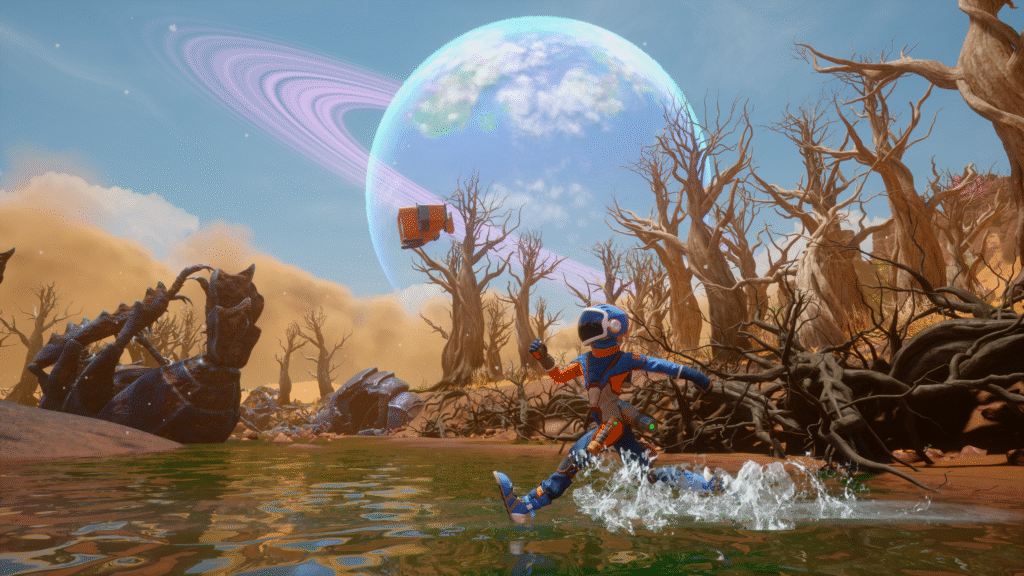
The game leans hard into satirical humor, skewering corporate greed and ineptitude with live-action FMV cutscenes, ridiculous product ads (like a “crypto nostril miner” on the “boogerchain”), and sassy emails. This Tim & Eric-esque tone is hit-or-miss—when it hits, it’s actually amusing, like a survey that pays you for mindlessly acquiescing to corporate propaganda. Yet the humor is occasionally forced, and the story loses momentum in the final act as it becomes a meta-commentary on game design that feels removed and underwhelming.
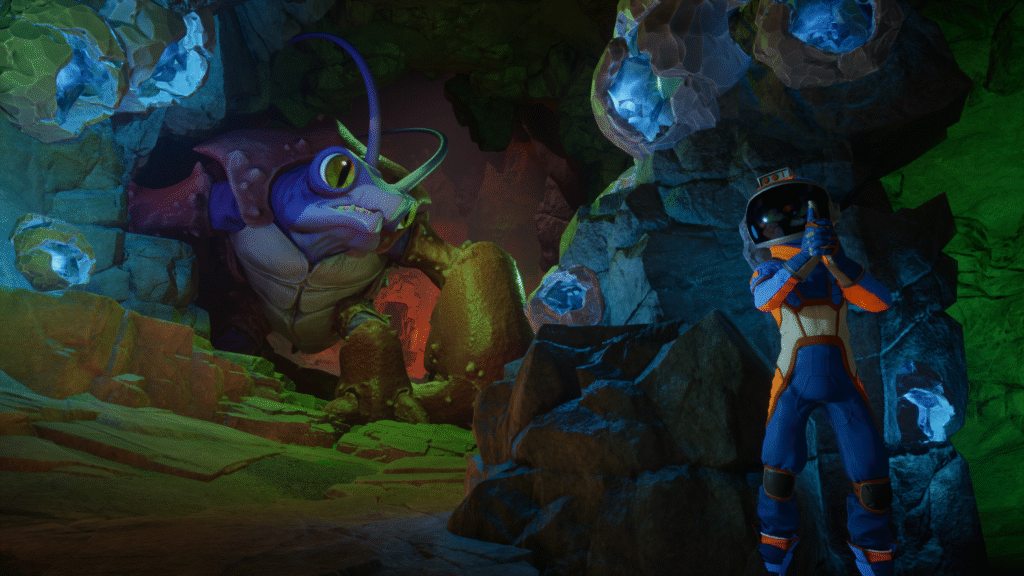
Exploration is the star of the show in Revenge of the Savage Planet, and here is where the game shines. The four worlds of Stellaris Prime, Xephyr, Quasadron IX, and Zenithian Rift are a joy to behold, with distinct biomes that range from thick rainforests to stinking swamps, freezing mountaintops, sandy dunes, and volcanic craters. The hyper-saturated palette and freaky alien designs, including exploding pink unicorns and monkeys with ass faces, create a “Nickelodeon show for adults” vibe that’s anarchic and fun. Scanning plants and animals to fill out your “Kindex” is a rewarding process, with clever descriptions infusing personality into even the smallest plants.
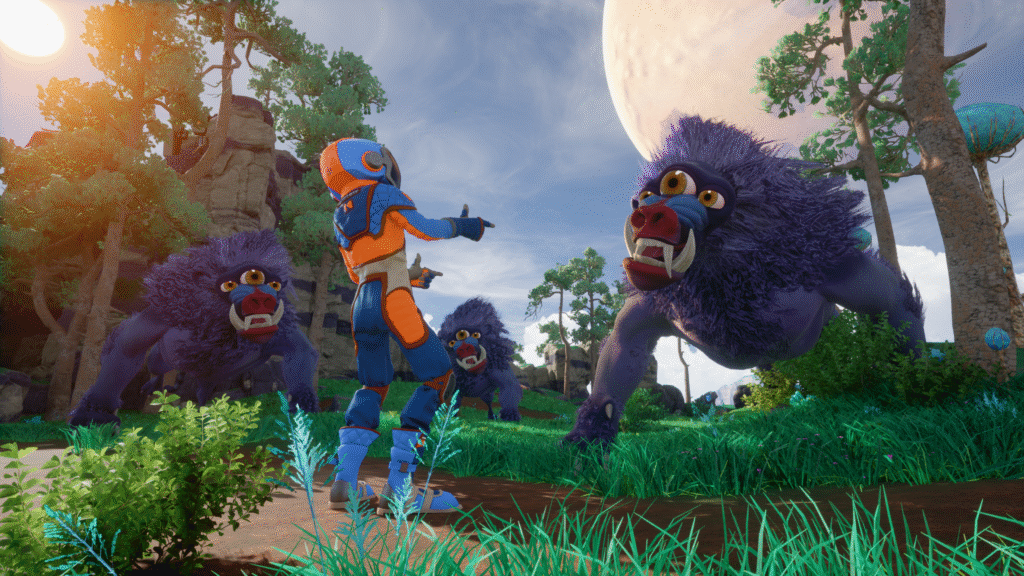
one of the best features in Revenge of the Savage Planet is the incentive to explore. Unlike other open world exploration games these days, Revenge of the savage Planet teases locations that are inaccessible without new abilities like a triple jump, grappling whip, or underwater breathing device. It’s satisfying to unlock these upgrades, as they open up new paths and secrets, from hidden shrines to caves filled with collectibles. The third-person perspective, a shift from the first game’s first-person, enables greater platforming precision, as players will have an easier time climbing cliffs, grinding energy rails, or leaping between floating islands. However, the constant backtracking for upgrades can feel constraining, and the reliance on returning to the central hub, Nu Florida, disrupts the flow of exploration and certainly feels repetitive.
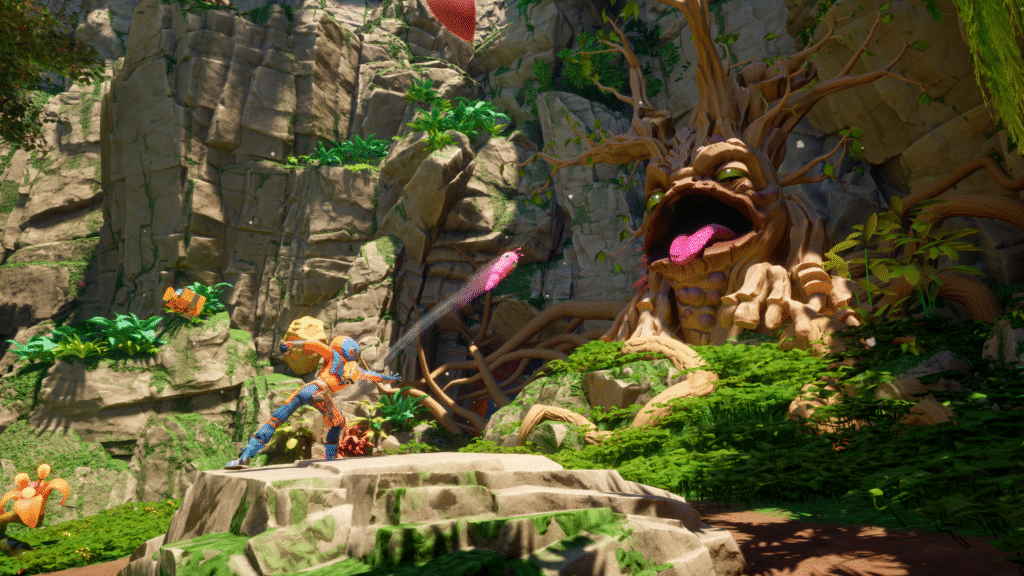
Gameplay is a combination of platforming, combat, and light crafting, with a focus on scrounging for resources to 3D-print upgrades. The “Power Hose” is a standout, letting you suck up and spray various goos (lava, conductive goo, flammable goo) to puzzle or trap enemies. A few other tools, like bait to distract enemies or a magnetic fork to launch metal projectiles, add some diversity, but the core combat loop is lacking. Your starting pistol is weak, and even upgraded, it lacks the punch to make encounters thrilling. Beast capturing for research (to unlock upgrades and cosmetics) adds depth, but weak point-striking to stun larger enemies can be finicky, especially with floaty controls.
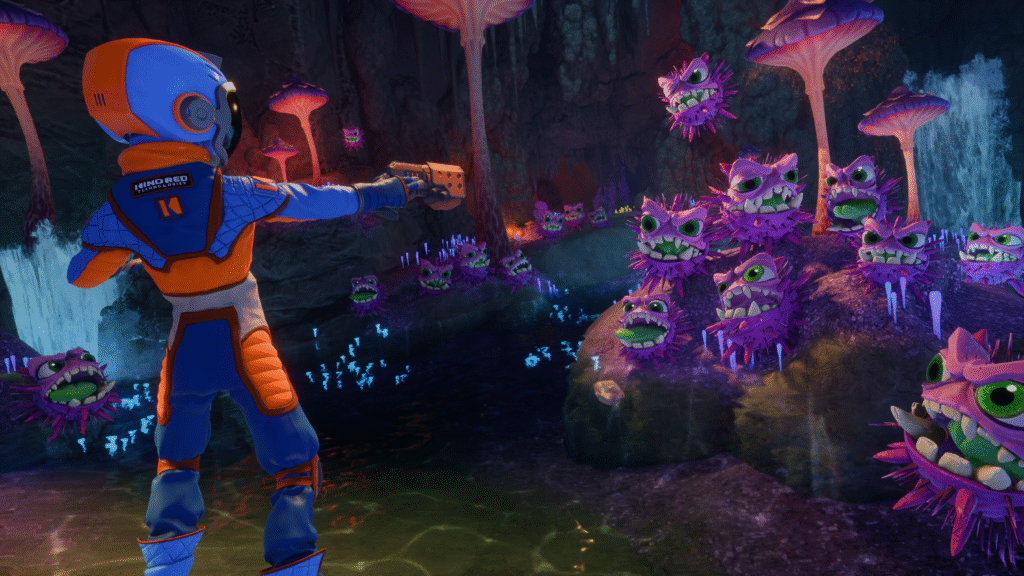
Boss fights are a highlight, parodying sci-fi tropes with creative mechanics—like a Dune-like sandworm with explosive dyspepsia. These fights require tactical use of your arsenal, but regular combat is too frequently a slog, with recycled enemy designs and annoying minor foes like teleporting bees. Death is also punishing, with a Soulslike system where you forfeit resources (like printer gunk) and must trek back to retrieve them, which becomes tiresome in later levels.
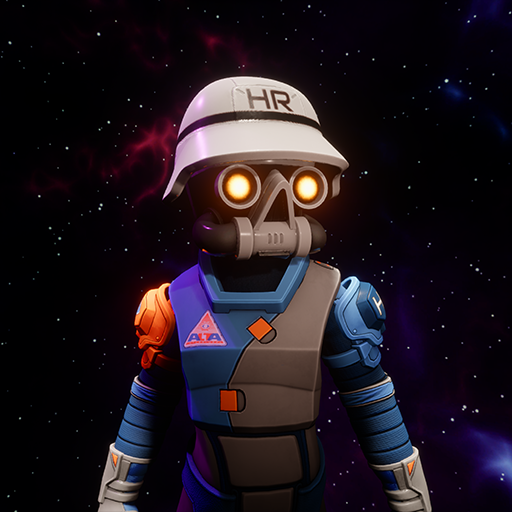
The co-op mode, with both local split-screen and online support, is a major attraction. It introduces anarchic fun playing with a friend, especially in setting up goo-based traps (like sloping slides into lava). Split-screen on PS5, though, exacerbates performance issues, and the busy visuals begin to become hard to read. Anecdotally, some reviews prefer the game as a solo experience, as co-op can amplify the sense of shallow busywork.
The sound design improves, with weird sci-fi synths offbeat, electric guitar riffs during combat, and solid voice acting for both the FMVs and EKO. The soundtrack goes atmospheric in later levels, which fits the unfolding mystery, but EKO’s constant quips can become annoying if not toned down in the options.
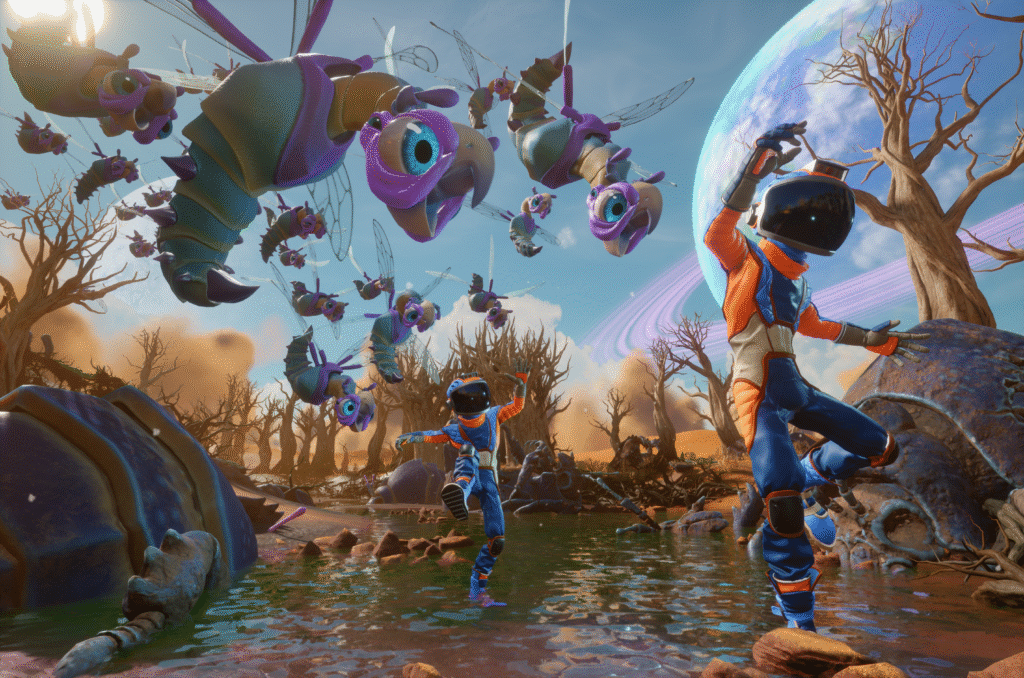
Revenge is bigger and more polished than Journey to the Savage Planet. Adding a functional map, objective markers, and collectible tracking remedies the sins of the original game. The shift to third-person gives your character more personality—dashing like a space-faring Captain Jack Sparrow or sliding on gunk like Bambi on ice. Being able to personalize your space trailer and spacesuit (with amusing cameos such as the Dave the Diver costume) is a bonus, and the 12-15 hour campaign (5 hours for completionists) is good value for an indie game.
Yet the game falls short of its potential. The pacing drags in the initial hours, with grindy quests and subpar gear making progress feel like a slog until some upgrades become available. The combat remains a weak link, and the story lacks the emotional depth to make its satire come full circle. While the worlds are lovely and exploration is rewarding, the repetition and technical issues are areas of opportunity that stand out too much to be glossed over.

Revenge of the Savage Planet is a vibrant, absurd, and ambitious sequel that delivers a solid serving of sci-fi wackiness and exploration. Its Technicolor worlds, clever gadgets, and sharp corporate satire make it an entertaining romp, especially for fans of the original or in the mood for a more casual co-op game. Technical issues, clumsy pacing, and average combat prevent it from being a genuine contender. It’s a game that’s easy to enjoy in bursts but hard to love unconditionally. For Xbox players, it’s worth a look if you’re drawn to quirky platformers and can overlook some jank, but don’t expect a genre-defining masterpiece. Stick with it past the slow start, and you’ll find a charming, if flawed, cosmic adventure.
Revenge of the Savage Planet is available now for Xbox, PC, Steam, and PlayStation at an MSRP of $39.99 for the standard editions, and $49.99 for the Cosmic Hoarders edition.
Review Code Provided by Renaissance PR
- Gameplay
- Visuals
- Audio
- Controls
- Story
- Replay Value

